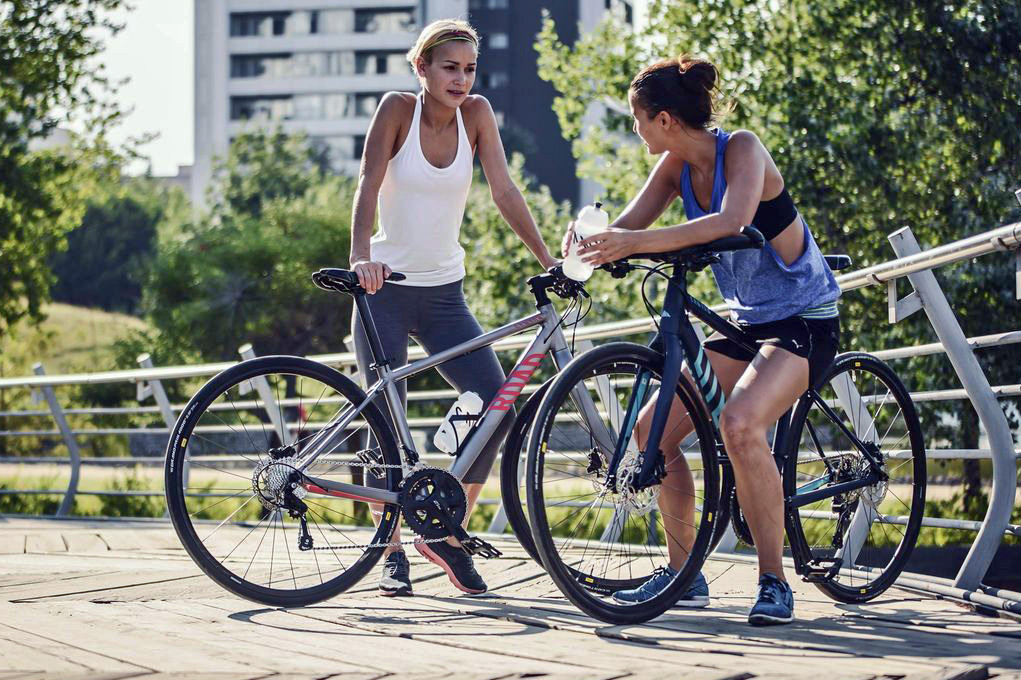Developed bike lanes, additional design options, and way more female-centric cycling gear, mean that more and more women are joining the ranks of city cyclists each year. Most major companies are creating bikes aimed specifically at women so the variety has never been better. Women’s bikes are no longer about slapping soft colours on a small frame, they’re the result of advanced research and adjusted geometrics.
Made for women’s bodies
Unisex bikes work for some, but designs developed specifically for women can help provide a more comfortable, and more efficient ride. Despite huge advances in bike engineering technology, standard frames are still built to suit men’s bodies. Of course, women come in all shapes and sizes, but female friendly frames account for different proportions that women exhibit on average.
Often smaller with a distinctive bodyweight distribution, women tend to have longer legs and a shorter torso and arms. Women’s designs take this into account by creating compact models with a more upright position, a shorter reach, and a lower top tube on the frame.
Finding the right saddle
One part of the bike that experts agree, almost unanimously, should be different for women and men is the saddle. Urban bikes enable a more relaxed, endurance seating position, which can cause pain in the sit bone area if the saddle width is not quite right. Keep in mind that women usually get on best with wider seats with pressure-reducing cutaways, but jean size does not necessarily determine seat size, so sit bone width assessment is critical.
Talk to an expert for optimal results
To determine singular needs, staff at a local bike shop can be a great resource for defining which seat shape, material, and cut-out/ padding are best suited to the individual. A common mistake is to opt for more padding when pain develops, but extra padding does not always mean extra comfort. Unnecessary padding will deteriorate, often resulting in an even worse experience.
Women’s specific saddles will also complement the position the rider will be in on the bike, so together with proper handlebar width and stem length, a female-friendly design will offer the best handling for women riders.
A better gear ratio
Some women’s bikes also offer adjusted gear rations, which can be crucial in a city with lots of hills. These models may run double or triple cranksets (so two or three chain rings next to the pedals) where unisex equivalents have a single ring, or may have a gear ratio that provides lower gears than the unisex equivalent. Keeping in mind that it’s not the number of gears, but the gear ratio that is key, these modifications will help less powerful riders climb their way up steep hills.
Accessories tailor for women
Once all the technical stuff is sorted out, accessories can be used to further personalize style and functionality. The good news is that women’s bikes and accessories are no longer available only is a predictable pallet of pink and pastel shades. There are now helmets, clothes, and even backpacks, available in a wide range of designs and colours, engineered for women’s bodies to provide optimum fit and comfort.
A growing community
As more and more women incorporate cycling into their daily routines, women run bike shops, clubs, and collectives are popping up all over the place. Many of these offer workshops about bike repair and maintenance and are a friendly environment to ask questions, share tips, and learn from other female cyclists. They’re a great way to build community and put urban cycling fears to rest.












